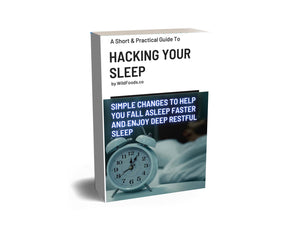Coffee And Mold
The debate surrounding mold in coffee is contentious, with strong opinions on both sides. Some argue that the brewing process kills mold and makes coffee safe to drink, while others argue that mold-produced mycotoxins are heat-resistant and pose a significant health risk. This piece examines the facts and common misconceptions about mold in coffee, looking at expert opinions, scientific evidence, and practical tips to keep your coffee delicious and safe.
The Mycotoxin Debate
Understanding Mycotoxins: Mycotoxins, such as ochratoxin A, are toxic compounds produced by certain molds. Unlike mold spores, these toxins resist high temperatures, including those used in coffee roasting (1).
This means that mycotoxins may remain even if mold is killed during roasting.
Consumer Concerns: A common concern among coffee drinkers, especially those paying a premium for organic and fair trade coffee, is whether their coffee has been tested for these harmful toxins (2).
One consumer shared their experience of feeling unwell after drinking "moldy" coffee and emphasized the importance of thorough testing, particularly for organic products.
The Importance of Mold Testing
Proponents' Viewpoint: Proponents of rigorous mold testing argue that it is essential for ensuring the safety and quality of coffee (3).
Given the potential health risks associated with mycotoxins, they believe all coffee, especially high-end organic varieties, should undergo comprehensive testing.
Skeptics' Perspective: Conversely, some experts argue that the fear of mold in coffee is overblown. They point out that mold typically only survives roasting if the beans are improperly stored for long periods.
Additionally, they caution against placing blind trust in "lab-tested" labels, which can sometimes be misleading. Regular self-testing by consumers is advocated as a more reliable method.
The Role of Roasting in Mold Control
Optimal Roasting and Consumption: The roasting process is critical in maintaining the freshness and flavor of coffee.
Freshly roasted coffee should ideally be consumed within two weeks of being roasted and after a short resting period. Coffee that sits on store shelves for months often loses its flavor and may increase the risk of mold contamination.
Freshness Matters: At Wild Foods, we emphasize the importance of freshness. Our beans are roasted in Austin and shipped quickly to ensure they reach consumers at their peak. This commitment to freshness enhances the flavor and minimizes the risk of mold.
Human Trials vs. Lab Testing
Lab Testing Limitations: While lab testing can provide some assurances, it could be more foolproof. Some companies may test their products infrequently yet still market them as "lab-tested." This can be misleading and does not necessarily guarantee the absence of mycotoxins (4).
Human Trials Approach: An alternative approach is human trials, where coffee is tested by individuals who evaluate its taste and how it makes them feel.
Wild Foods uses this method to ensure that only the best-tasting and safest coffee reaches consumers. Feedback from real users is invaluable when creating a list of approved coffee beans.
Related Studies:
- This study examines the heat stability of ochratoxin A in coffee, which is a significant concern due to the potential for mycotoxins to persist even after roasting and brewing processes.
- This comprehensive review highlights the health risks associated with mycotoxins in coffee and emphasizes the importance of mold testing to ensure consumer safety.
- This study emphasizes the necessity of mold testing in coffee, highlighting the potential health benefits of detecting and removing mycotoxins from coffee products.
- This study discusses the limitations of lab testing for mycotoxins in coffee, highlighting the need for more reliable and accurate methods to ensure consumer safety.
Conclusion
The issue of mold in coffee is complex, with valid points on both sides. While mycotoxins are a legitimate concern, the fear of mold can often be exaggerated. By prioritizing freshness, choosing reputable brands, and conducting personal tests, coffee lovers can enjoy their favorite beverage with peace of mind. Using your body as a test lab is the most reliable way to determine what works best for you. Stay informed, stay critical, and enjoy your coffee.
FAQs
Q: What are mycotoxins, and why are they a concern in coffee?
Mycotoxins are toxic substances produced by certain molds. They are a concern because they can survive the coffee roasting process and pose health risks if consumed.
Q: Does roasting coffee kill mold?
Roasting coffee kills mold spores, but it does not eliminate mycotoxins. Proper storage and handling are critical for preventing mold contamination.
Q: Should all coffee be lab-tested for mold?
While lab testing can be helpful, it is only sometimes reliable. Regular self-testing and choosing reputable brands prioritizing freshness and quality are also important.
Q: How can I ensure my coffee is mold-free?
Buy from reputable sources, prioritize freshly roasted beans, and consider lab tests and personal experience with the coffee.
Q: Is freshly roasted coffee better?
Yes, freshly roasted coffee has superior flavor and a lower risk of mold contamination. It is best consumed within two weeks of roasting
